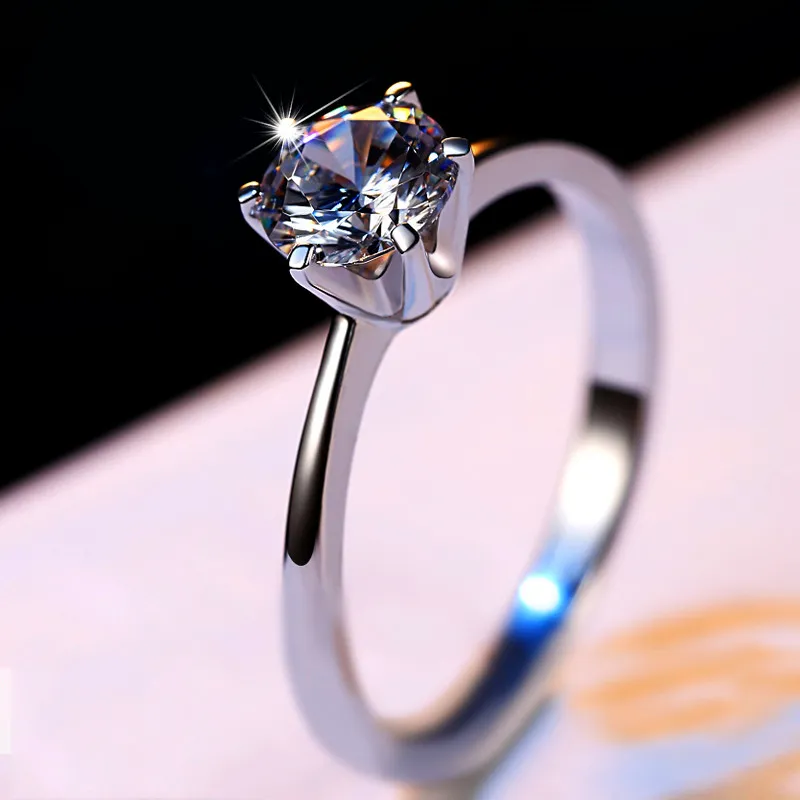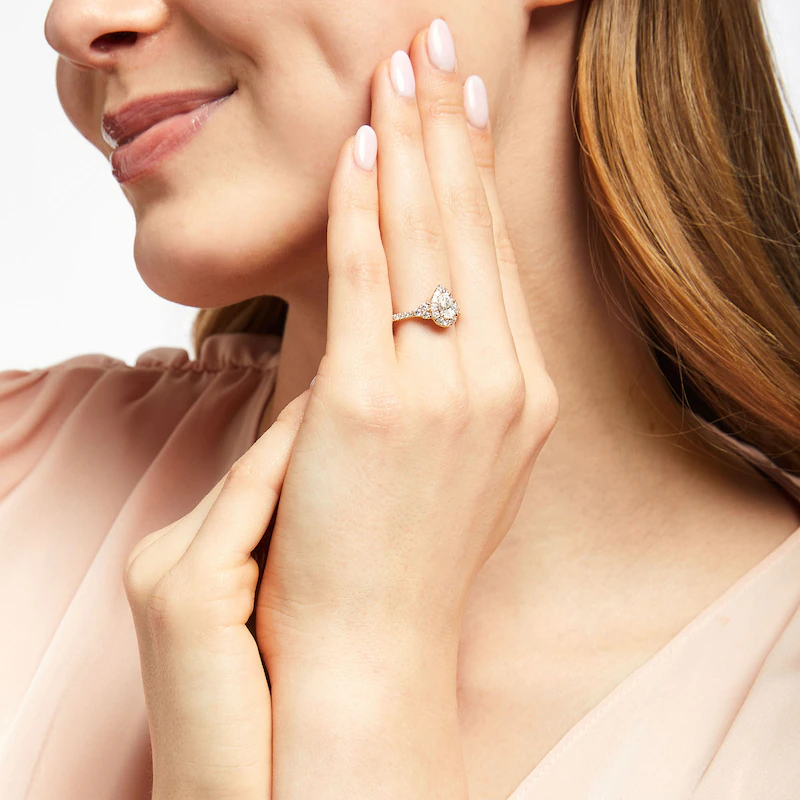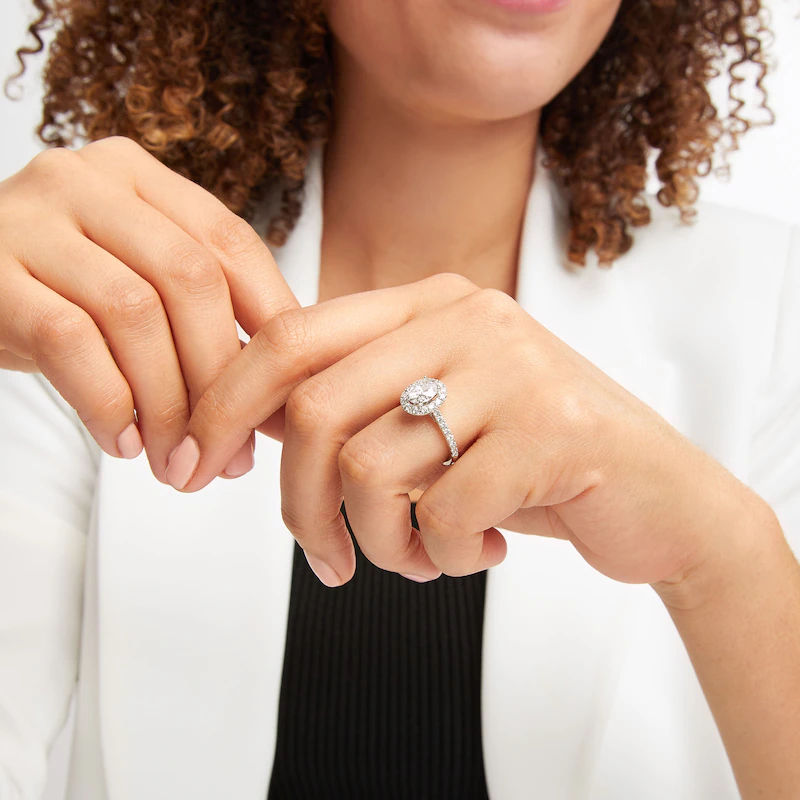What should you pay attention to when buying a diamond ring? How are diamond ring prices determined? What are the best diamond rings.
Buying tips for cut quality
The most common mistake made when purchasing a diamond engagement ring is to miss out cut quality. It is more difficult to define the cut of a diamond than the color or clarity. Therefore cut quality is often ignored or misrepresented.
Cut is said to be the most important C of 4Cs, as it is by far the biggest factor that determines its beauty. The better the cut, the better the brilliance and sparkle of the diamond. Diamonds may have deep, ideal or shallow cuts. If the cut of the stone is too deep or too shallow, light that enters the diamond will leak through it. This is why poorly cut diamonds often look darker, duller and lifeless.
Terms used by retailers for describing cut grades are as following:
‘Excellent’, ‘Very Good’, ‘Fair’, ‘Poor’. Today, these terms are not defined or applied exactly the same among all diamond sellers. Because sellers may specify any cut grade based on any factors they wish. One seller may use the term as ‘Excellent’, ‘Very Good’ etc. while another one may use the term ‘Ideal’ to describe all of them.
When comparing cut grades of diamonds, be aware of the grades you are told by different sellers for they will be likely inconsistent. Many diamond sellers or popular websites display their own grades instead of the GIA grades.
Diamond ring tips
When considering cut grade, do not take the jeweler’s word. Ask for the GIA cut grade for round diamonds or fancies to use carefully to compare the depth, symmetry and flourescence of two diamonds.
Always prefer diamond sellers who use the same cut grades as described by GIA, not the ones who engage in cut inflation by creating other grades such as ‘Signature’, ‘Super Ideal’ etc.
A poorly cut diamond will have a dull appearance although it may have an excellent color or clarity.
On the contrary, a well cut diamond can still look quite beautiful though it has a slightly lower color (G-H) or clarity (SI1-SI2) because of its superior ability to create sparkle and brilliance.
Avoid ‘Poor’ cut diamonds, even if the size is the most important factor for you when purchasing a diamond engagement ring. Never purchase a diamond because of it’s low price as they may be poor cut. You may not know if both diamonds are the same cut quality. Cut quality affects brightness thus perceived color of a diamond.
‘Poor’ cut diamonds are less expensive per carat and are very common in most jewellery stores while ‘Well’ cut diamonds are more expensive per carat than ‘Fair’ or ‘Good’ cuts and few are available at local jewellery stores. So when a you want to purchase a high quality diamond engagement ring from a local or a traditional jewellery store, you may not be shown the best cut diamond but the best of the available options that are currently available at that particular store.
If you prefer a round diamond with superior brilliance, it is better to choose a diamond with a ‘Very Good’ or ‘Excellent’ cut grade.
In fancy shapes, a diamond which has ‘Fair’ or ‘Good’ cut may be an acceptable choice while the size will be allowed to increase significantly for the same price of a well cut diamond.
The symmetry of a diamond is also significant when choosing a diamond in this range. You had better prefer the ones which are ‘Very Good’ or ‘Excellent’. Symmetry has a significant impact on price: A diamond with ‘Excellent’ symmetry and polish may be 10%-15% higher than a diamond with ‘Good’ symmetry and polish.
Diamonds with ‘Poor’ symmetry have defects that can be visible to the naked eye thus these diamonds should not be a choice to consider.



Buying tips for carat weight:
Carat weight is as much an important factor as the shape of a diamond when it comes to purchasing a diamond engagement ring. The most popular carat weights for engagement diamonds are between 1 and 2 ct.
You can look for carat weights which are just under popular ones such like ½, ¾ 1 ct. etc. These diamonds are usually sold for a slight lower price than full weight diamonds. For example you can prefer a 0.90 ct. diamond than a full 1ct. one.
Buying tips for shape:
The round shape is the sparkliest among all diamond shapes as it has the most facets. When cut, most of the rough diamond is lost causing it’s carat quality to rise. Because of this, round diamonds are slightly more expensive than other diamonds.
Not only are round diamonds more brilliant but they also are mounted easily on almost every ring and never go out of fashion.The width – lenght ratio is very significant as it has a major effect on the shape of a diamond.
Buying tips for color:
Generally, diamonds appear to be colorless or whitish at first glance and most untrained observers and many gemologists can not distinguish a color grade from the one just above or below. They have to be compared side by side in a controlled environment. Even when side-by-side, changes in color are difficult to detect in I color and higher diamonds. There are definitely slight differences in various diamond color grades. Diamonds can be found in hundreds of different colors in nature.
Diamond color grading scale according to GIA, begins with the letter ‘D’ and ends with ‘Z’. D is the highest color grade and stands for the first letter of the word diamond – the whitest (the most colorless) diamond. The whiteness and color of a diamond changes from D to Z and a D diamond is very difficult to find.
D, E and F diamonds are considered colorless. This means that they have no yellow tint. The price comparison between these 3 grades is as following: $9,500, $8,250, $7,500.
G-H and I-J diamonds: These diamonds are defined as near colorless diamonds. But there are slight differences when it comes to mounting the diamond on a ring.
If you want to wear a white gold, platinum or palladium ring, G-H diamonds are the best choice.
Yellow gold rings are more suitable for H-I diamonds as yellow is reflected on the diamond.
You should not choose J color diamonds as an engagement ring unless you have another choice.
If you are concerned primarily about carat weight and are on a tight budget, you can consider a yellow gold ring and a brilliant cut diamond in the K-L color range. The yellow gold will complement the faint body color of the diamond.
If you are ever given a color range (e.g. D-E) as opposed to a specific grade while purchasing a diamond, be aware that the diamond is not certified by GIA or any other labs. The seller is only estimating the diamond’s color using GIA terminology and the color grade the seller has given is not reliable. To be sure your diamond was graded by GIA, insist on seeing its GIA grading report. Do not accept the jeweler’s grade instead of GIA standarts. GIA offers a variety of diamond grading reports.
If you have doubts about the color grade you are given, you may ask the jeweler if you can compare it to a master color set which is a standardized set of cubic zirconia stones showing the various color grades.
You can decide more easily which diamond engagement ring to purchase by making a comparison between diamonds that have different colors.
When purchasing a diamond engagement ring, be aware of the lighting conditions of the jewellery store you are going to. Each jewellery store lighting is designed to make diamonds look their best. A yellow diamond may appear whiter under different spectrums of light such as a spectrum that shifts towards blue. Be sure to look at the diamond under different lighting conditions especially by taking it outside the showroom area. You can go outside and look at it under natural daylight, directly under the sun light or an environment where spot lighting is not overwhelming.
Buying tips for clarity:
Another factor you need to consider when buying a diamond ring is clarity. Diamond clarity is a qualitative metric that grades the visual appearance of each diamond. While the clarity can significantly impact a diamond’s value, imperfections typically can not be recognized by the naked eye.
Only the rarest diamonds emerge in perfect condition. There are various but slight imperfections on or inside diamonds and the term clarity defines the quantity and size of these imperfections such as internal inclusions and surface blemishes. Most often diamonds are imperfect. The imperfections found in diamonds are natural and can not be visible to the naked eye. Actually these imperfections are blemishes that are formed over time on the surface of a diamond or internal inclusions by various minerals and elements. These are some kind of footprints of nature. Because of these footprints, tiny surface blemishes and internal inclusions may occur in a diamond. There are several different types of inclusions such as bearding, graining, cavity, feather etc. Bearding causes a slightly blurred or fuzzy appearance on the diamond. Graining causes some changes in color. Internal graining begins to appear as white, colored, or reflective lines. Cavities can appear colorless or colorful. Feather can appear to be transparent or it can capture light and create more of a white appearance. The size of the inclusion is important because the bigger the inclusion, the bigger impact the inclusion will have on the diamond’s clarity grade.
Clarity scale of a diamond is defined as following: FL, IF-VVS1, VVS2- VS1, VS2- SI1, SI2- I1, I2, I3.
FL-IF (Flawless-Internally flawless): The most expensive clarity scale in diamonds. It means that there is no blemish on the surface or in the diamond. Flawless diamonds are extremely rare.
VVS1-VVS2 (Very Very Small Inclusions 1-2): Clarity is near-perfect. It is considered as almost flawless. If clarity is a significant criteria for you, a diamond in this clarity scale can be a good choice.
VS1-VS2 (Very Small Inclusions 1-2): This scale emphasizes that some blemishes can be seen by using a magnifying glass. If you aim to purchase a clear diamond with the best price that fits your budget, you had better make a choice between the clarity scales mentioned above.
SI1-SI2 (Small Inclusions 1-2): These diamonds have blemishes that can only be seen by using a magnifying glass and are almost always clear to the naked eye. These diamonds have an affordable price.
I1, I2, I3 (Inclusions 1-2): These are diamonds that have the cheapest price and have many blemishes that can be visible to the naked eye.
If you desire a round diamond, you can prefer H color diamond with a ‘Very Good’ cut and a clarity of VS2.
If you have a restricted budget, you can go as low as SI1 for clarity, J for color and ‘Good’ for cut in round diamonds. If you prefer a diamond under 1 carat, you can consider a drop to SI2 clarity. If the diamond is under 1,5 carats and will be mounted on a golden ring, you can consider a L-M color. After these steps, if size matters more than else, you can choose a ‘Fair’ cut round or fancy shape.










